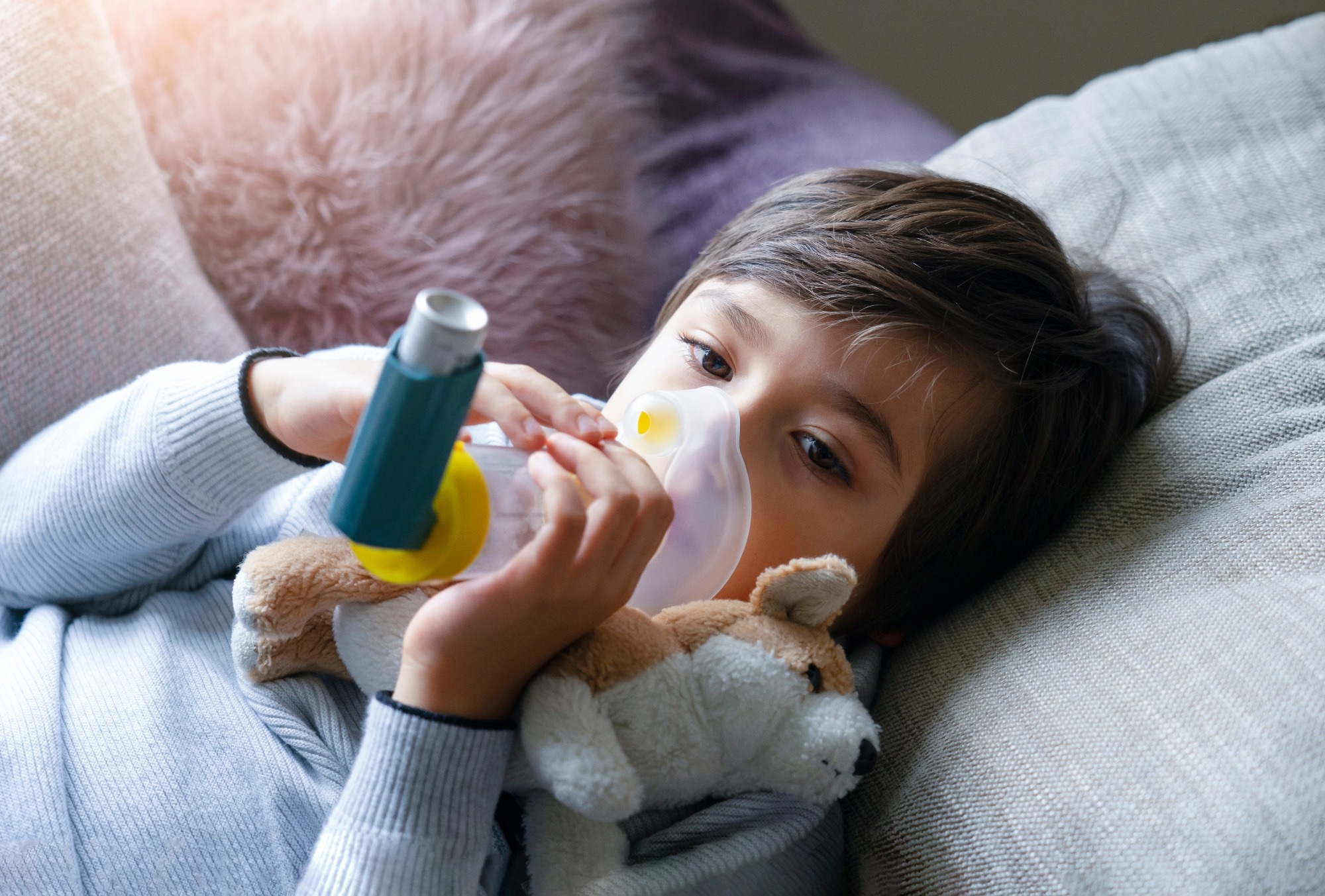In a recent study published in JAMA Network Open, a group of researchers explored how early exposure to fine particulate matter (PM2.5) and nitrogen dioxide (NO2) air pollution influences childhood asthma risk and assessed how this relationship is affected by individual and community factors.
 Study: Early-Life Exposure to Air Pollution and Childhood Asthma Cumulative Incidence in the ECHO CREW Consortium. Image Credit: Ann in the UK / Shutterstock
Study: Early-Life Exposure to Air Pollution and Childhood Asthma Cumulative Incidence in the ECHO CREW Consortium. Image Credit: Ann in the UK / Shutterstock
Background
Air pollution significantly impacts children's health, contributing to respiratory issues and the development of asthma, with traffic pollution identified as a key culprit. Despite this knowledge, the role of individual and community-level factors in increasing susceptibility to these effects, particularly among children, is not well understood. The Environmental Influences on Child Health Outcomes (ECHO) Children's Respiratory and Environmental Workgroup (CREW) consortium, with its diverse and extensive dataset spanning decades and covering various geographical and demographic groups, offers a unique opportunity to delve into these complexities. Further research is needed to understand the complex interplay between air pollution exposure and childhood asthma, particularly how individual and community-level factors influence susceptibility and outcomes.
About the study
The present study included eight longitudinal birth cohorts from the CREW, covering a wide range of environments across the United States (U.S.), from urban to rural settings. Selection excluded cohorts lacking harmonized asthma outcomes or without early-life air pollution data. These cohorts, spanning births from 1987 to 2007 and followed until age 11, adhered to ethical standards, including obtaining informed consent and institutional review board approvals, aligning with the Strengthening the Reporting of Observational Studies in Epidemiology (STROBE) guideline.
Asthma was determined based on caregiver reports of physician diagnoses analyzed through survival and logistic regression methods to capture incidence in early (before age 5) and middle (before age 12) childhood. The study also differentiated persistent asthma cases from transient ones through sensitivity analysis involving wheeze reporting post-age 3.
Participant data included a variety of individual characteristics such as sex, race, ethnicity, maternal education, smoking during pregnancy, and parental asthma history, acknowledging race as a social construct interconnected with various socio-economic and environmental determinants.
Air pollution exposure to PM2.5 and NO2 was estimated using validated prediction models linked to participants' home addresses. These estimates covered daily and monthly concentrations tailored to each child's early life stages. Neighborhood characteristics were derived from U.S. census data and indices like the Child Opportunity Index (COI) and the Social Vulnerability Index (SVI), providing insights into the socio-economic landscape and potential risk factors affecting health outcomes.
Statistical analyses employed Cox proportional hazard and logistic regression models to explore the association between air pollution exposure and asthma incidence, adjusting for a comprehensive set of confounders and exploring potential effect modifiers.
Study results
The study included a diverse cohort of 5,279 children across the United States, with a notable racial and ethnic mix: 31.4% Black, 15.8% Hispanic, 48.4% White, and 4.3% of other races or ethnicities. Gender distribution was nearly even, with 51.5% male and 49.2% female participants. By the age of 11, 24.7% of the children had been diagnosed with asthma, and 18.1% had received diagnoses by age 4. A significant portion of mothers (62.8%) had attained some college education or higher, whereas 10.7% reported smoking during pregnancy. Additionally, 35.9% of the children had a parental history of asthma.
The analysis revealed a substantial variation in air pollution exposure, specifically PM2.5 and NO2 levels, and in neighborhood-level variables across the cohorts. Notably, NO2 levels correlated with population density, while socio-economic variables showed a positive correlation with the SVI and a negative correlation with the COI, indicating the intertwined nature of pollution, socio-economic status, and asthma risk.
Early life exposure to air pollution emerged as a significant factor in asthma incidence. Specifically, increases in NO2 and PM2.5 levels during the first three years of life were associated with higher asthma rates in early childhood and persisting into middle childhood. This association was more pronounced for children exposed to higher levels of pollutants, highlighting the critical impact of air quality on child health.
The study further explored how individual characteristics and neighborhood-level factors influenced the relationship between air pollution and asthma. Findings indicated stronger associations among children from less educated households and Black children, suggesting that socio-economic and racial disparities exacerbate the health impacts of air pollution. For instance, Black children experienced a significantly higher risk of asthma from PM2.5 exposure compared to White children, illustrating the compounded vulnerability of certain groups to environmental hazards.
Neighborhood factors, such as lower educational attainment and opportunity levels, were also linked to increased asthma incidence, reinforcing that individual and community-level determinants play crucial roles in health outcomes. The sensitivity analyses supported these findings, showing consistent associations across different models and analyses, the reby confirming the robustness of the observed associations between air pollution exposure and asthma risk in children.